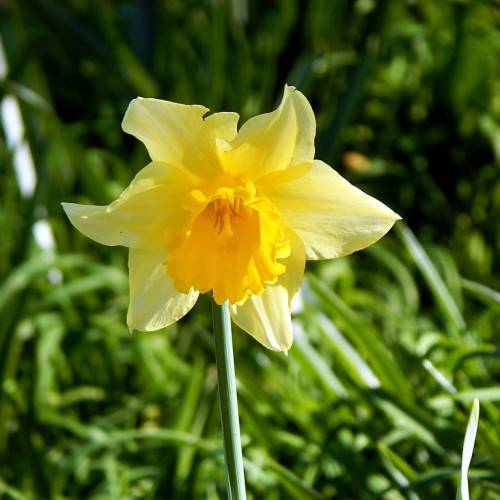
trumpet daffodil
Narcissus 'King Alfred'
Cycle:
Perennial
Watering:
Average
Hardiness Zone:
3 - 8
Flowers:
Flowers
Sun:
Full sun,part shade
Soil:
Well-drained
Fruits:
Fruits In Spring Ready In Fall
Leaf:
Yes
Growth Rate:
High
Maintenance:
Low
Care Level:
Medium
watering
Trumpet Daffodil (Narcissus 'King Alfred') plants should be watered regularly and deeply. The best way to determine when to water your plant is to check the soil's moisture content. The soil should feel slightly moist but not soggy. If it feels dry, it is time to water. During the growing season (spring through summer), water your trumpet daffodils about 2-3 times per week for a total of about 1-1.5 inches of water. During the dormancy period (late fall through winter), you can reduce the number of watering sessions to once a week for a total of about 0.5-1 inch of water.
sunlight
For optimal growth, the trumpet daffodil (Narcissus 'King Alfred') requires at least 6 hours of direct sunlight each day. This can be divided into a few hours in the morning and late afternoon. In hotter climates, morning light is beneficial, as it can help keep the leaves from burning or drying out in the afternoon. The trumpet daffodil needs more than just sunlight to reach its full potential, so avoid placing them in extremely hot or dry spots, typically those on the south side of a building. If the temperature climbs above 90°F, look for a spot that will receive more shade.
pruning
The amount and frequency of pruning for trumpet daffodils (Narcissus 'King Alfred') will depend on the purpose. If you’re pruning for size and shape, you would want to prune in the early spring after the flowers have bloomed. Remove any dead, damaged, or fading flower heads as well as any old foliage that has yellowed and lost its vigor. You can also trim back the stems lightly to encourage bushier growth. If you’re looking to divide and transplant your trumpet daffodils, you should do this in the early fall when there isn’t much foliage left and when the bulbs are beginning to develop. To completely start your plants anew, you should wait until late summer to dig up and replant the bulbs.
